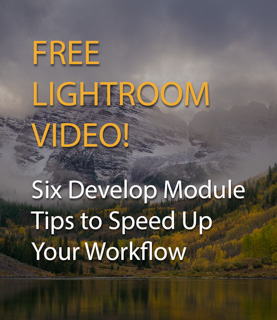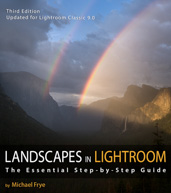In the Moment:
Michael Frye's Landscape Photography Blog
by Michael Frye | Nov 8, 2011 | Yosemite Photo Conditions
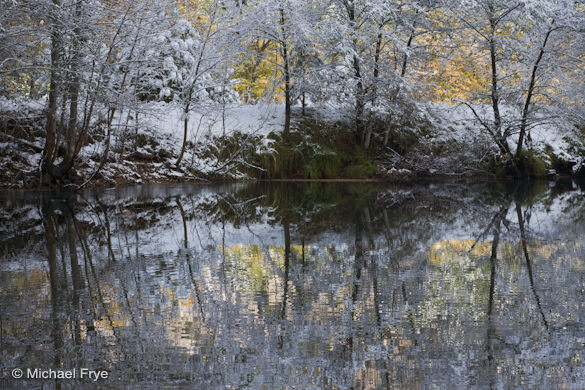
Reflections along the Merced River
Last Thursday night a weak storm brought rain and snow to the Sierra. Before going to bed I checked the satellite and radar images online, and it looked like the storm might clear by sunrise, so I set my alarm for some ungodly hour. When the alarm went off I looked at the satellite photos on my iPhone without even getting out of bed. At moments like these, half asleep, warm under the covers, I almost hope those little animated images will show lots of clouds, so I can just roll over and go back to sleep. But alas, it looked like it was clearing. I got up and looked out the window: stars. The only thing worse than getting out of bed in the dark on a cold morning is missing a great sunrise. Time to get dressed.
(more…)
by Michael Frye | Nov 3, 2011 | Workshops, Yosemite Photo Conditions
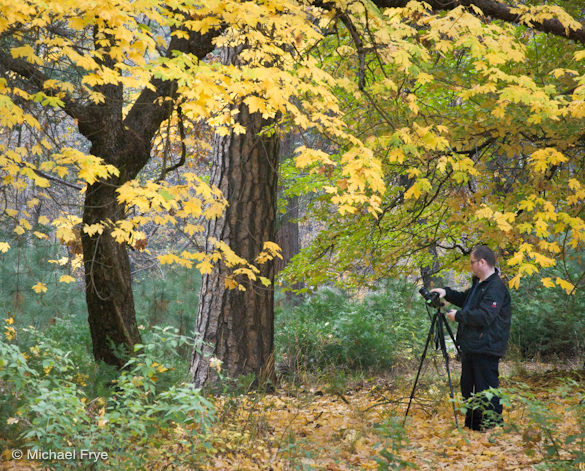
Workshop participant photographing a colorful maple
My five-day Digital Landscape: Autumn in Yosemite workshop ended Sunday, and I taught another private workshop in the park on Tuesday, so I’ve been able to monitor the fall colorin Yosemite Valley closely. The yellow big-leaf maples are past peak in a couple of early-changing spots, and just getting there in other places (like around Fern Spring), but overall they look great. The dogwoods are becoming more colorful every day. Most are still partially green, but you can find beautiful specimens around Valley View and between the old dam (Highway 120/140 junction) and Pohono Bridge. The higher-elevation dogwoods along Highways 41 and 120, and in the Tuolumne Grove, should be prime, though I haven’t checked them out personally. (more…)
by Michael Frye | Oct 28, 2011 | Announcements
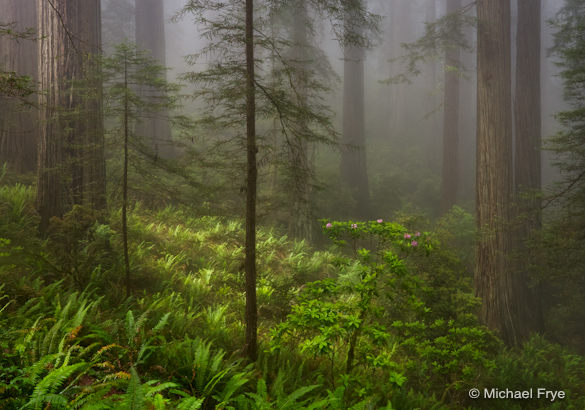
Redwoods, Ferns, and Rhododendrons Near the Northern California Coast
Just a quick reminder that The Ansel Adams Gallery print sale ends Sunday. Two of my never-before-printed images—Redwoods, Ferns, and Rhododendrons, and Sunbeams From Tunnel View—are available at 25% off the normal price until 6 p.m. Pacific time Sunday afternoon. After that they’ll go back to the normal price, and they won’t be on sale again! Click here to purchase or read the stories behind these photographs.
(more…)
by Michael Frye | Oct 27, 2011 | Yosemite Photo Conditions
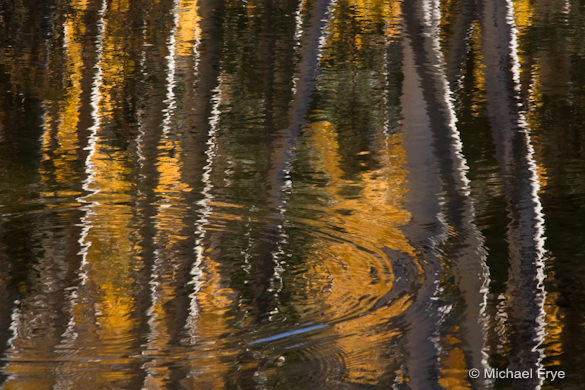
Reflections of aspen trunks and leaves
Here are a few of my favorite images from our trip to the Eastern Sierra last week. These three photographs share some common themes: all have water, and reflections, and are more about colors and patterns rather than any particular subject. In other words, they’re abstract. I tend to see this way—to look for designs rather than concern myself with accurately portraying a subject. If the opportunity to photograph a grand, sweeping landscape presents itself, great, but if not I try to look for less obvious subjects, and sometimes get lucky and find hidden jewels. (more…)
by Michael Frye | Oct 24, 2011 | Announcements
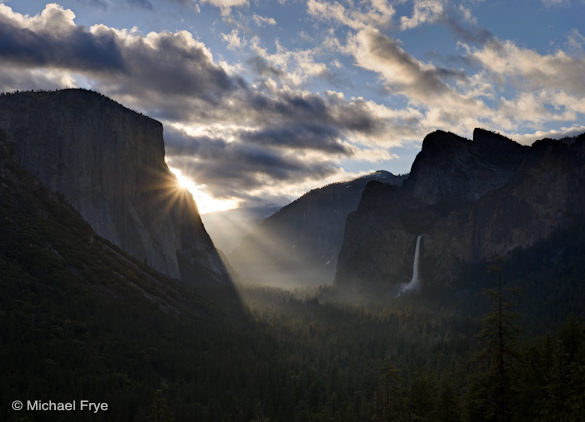
Sunbeams From Tunnel View, Spring, Yosemite National Park, California
For the first time ever, The Ansel Adams Gallery is sponsoring a special print sale of two of my images at 25% off the normal price. These are two recent photographs that have never been printed before, and both are available in two sizes: 16×20 and 20×24. My signed, limited-edition 16×20 prints usually sell for $325, but during this sale you can get one for only $244! Or you can purchase a 20×24 print, normally $475, for only $356! The sale lasts for just six days, until Sunday, October 30th, at 6:00 p.m. Pacific time. Visit the Ansel Adams Gallery web site to purchase or get more details.
(more…)
by Michael Frye | Oct 22, 2011 | Yosemite Photo Conditions
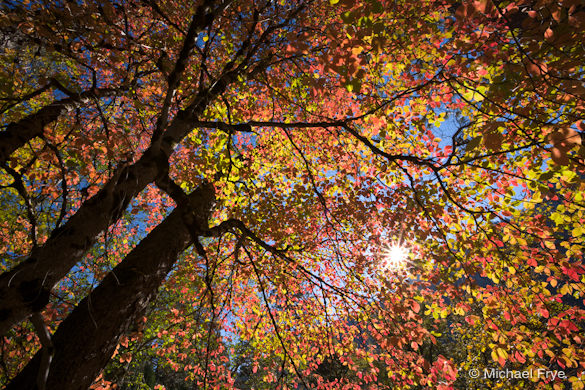
Dogwood near Valley View yesterday
I taught a private workshop in Yosemite Valley yesterday, so that gave me a chance to check on the autumn progress. The big-leaf maples, which often provide the most vibrant fall color in the valley, are getting there; I’d say they’re about 60 percent turned. The best spots for maples right now are across the river from the junction of Highway 140 and the Big Oak Flat Road (Highway 120), and along Southside Drive underneath Middle Cathedral Rock (and directly across the valley from El Capitan).
The dogwoods are also changing, though not as quickly as the maples. We saw some nice ones near Valley View, aka Gates of the Valley (Location 5 in both the book and app versions of The Photographer’s Guide to Yosemite), including the specimen at the top of this post. But there are still a lot of green dogwood leaves, so I’d say they’re about 30 percent turned. The dogwoods at higher elevations, along Highways 41 and 120, and in the Tuolumne Grove, usually turn earlier, so they should be looking good, but I haven’t been able to check them out.
(more…)
by Michael Frye | Oct 20, 2011 | Yosemite Photo Conditions
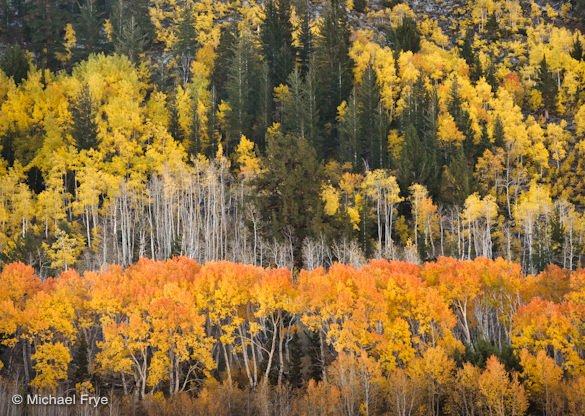
Aspen-covered hillside
Conditions on the eastern side of the Sierra haven’t changed much since my post two days ago. In other words, the autumn color is still wonderful. I’ll just add that we got a closer look at Dunderberg Meadow, and it’s a bit past peak, but still beautiful. We also checked out Lee Vining Canyon today, and there’s plenty of color there, though some groves are still green. Around the June Lake Loop, the beautiful hillside between Grant and Silver lakes is about half green, but the aspens in the nearby valley floor have all turned, and some are even bare.
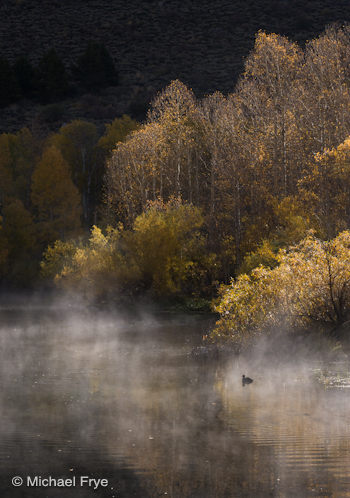
Aspens, willows, and an American coot
There should be plenty of color for at least the next week. Some aspens will lose their leaves, but the green ones will turn soon. I’ll be in Yosemite Valley tomorrow, and I’m anxious to see how much the color has changed. I’ll let you know what I find!
Here are a couple of images from the last few days. I’ll post more when I can.
—Michael Frye
Related posts: Autumn Has Finally Arrived in the Eastern Sierra; App Update is Ready; Fall Color in Yosemite;
Michael Frye is a professional photographer specializing in landscapes and nature. He is the author and photographer of The Photographer’s Guide to Yosemite, Yosemite Meditations, and Digital Landscape Photography: In the Footsteps of Ansel Adams and the Great Masters, plus the eBook Light & Land: Landscapes in the Digital Darkroom. He has written numerous magazine articles on the art and technique of photography, and his images have been published in over thirty countries around the world. Michael has lived either in or near Yosemite National Park since 1983, currently residing just outside the park in Mariposa, California.
by Michael Frye | Oct 18, 2011 | Yosemite Photo Conditions
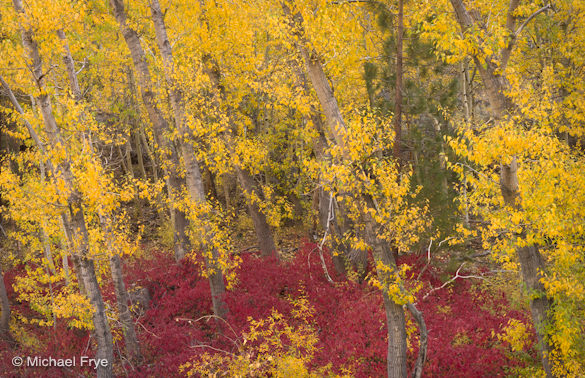
Cottonwoods with a dogwood understory, June Lake Loop
Sometimes it seems as if autumn will never come, but it always does. From all reports there wasn’t much color on the eastern side of the Sierra a week ago, but things have changed, and the aspens are just beautiful right now. Most of the usual spots near Lee Vining have great color, including the June Lake Loop, Parker Bench, Lundy Canyon, Conway Summit, the road to Virginia Lakes, Dunderberg Meadow, Green Creek, and Summers Meadows.
We had a wonderful day photographing all that color. Autumn in this area is just magical. Here’s one photo from the June Lake Loop this morning, and I’ll post more when I get a chance to process them.
(more…)
by Michael Frye | Oct 17, 2011 | Yosemite Photo Conditions
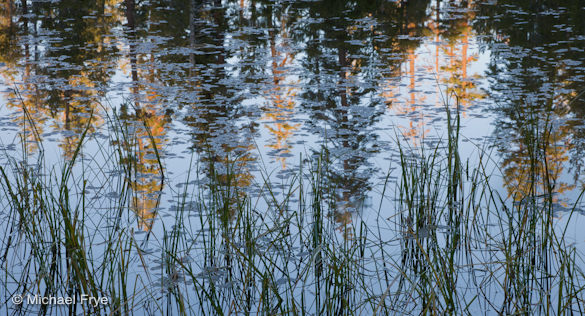
Reeds and reflected trees at Siesta Lake, Yosemite
Good news! Apple approved the update for The Photographer’s Guide to Yosemite iPhone app today, so it now works with iOS 5.0 (or any version from 3.1 on). I’m glad that Apple approved the update so quickly; sorry again about the inconvenience.
Meanwhile, autumn has finally begun in Yosemite. Fall color was nearly non-existent a week ago, but every day more leaves are turning. Yosemite Valley is not close to peak color yet, but things are changing quickly, and I think we’ll see some great color within a week. In fact some of the maples are already completely yellow.
(more…)
by Michael Frye | Oct 13, 2011 | Announcements
Apple just released it’s new operating system (5.0) for iPhone, iPad, and iPod Touch. Unfortunately the new OS causes problems with The Photographer’s Guide to Yosemite iPhone app. We have already submitted an update to Apple that will fix the problem, but under normal circumstances it takes a week for Apple to approve this, and I suspect they will be inundated with updates to apps, so it could take longer.
So if you’re planning to use the app within the next week or two, the best solution is to not upgrade to iOS5 yet. When you sync your phone (or iPod or iPad) to your computer, if it asks you whether you want to update, click Cancel or Later. If you’ve already upgraded to iOS5, unfortunately there doesn’t seem to be a safe and easy way to go back to iOS4, so you will have to wait for the update to be released.
Please accept my sincere apologies for any inconvenience this may cause!
— Michael Frye











